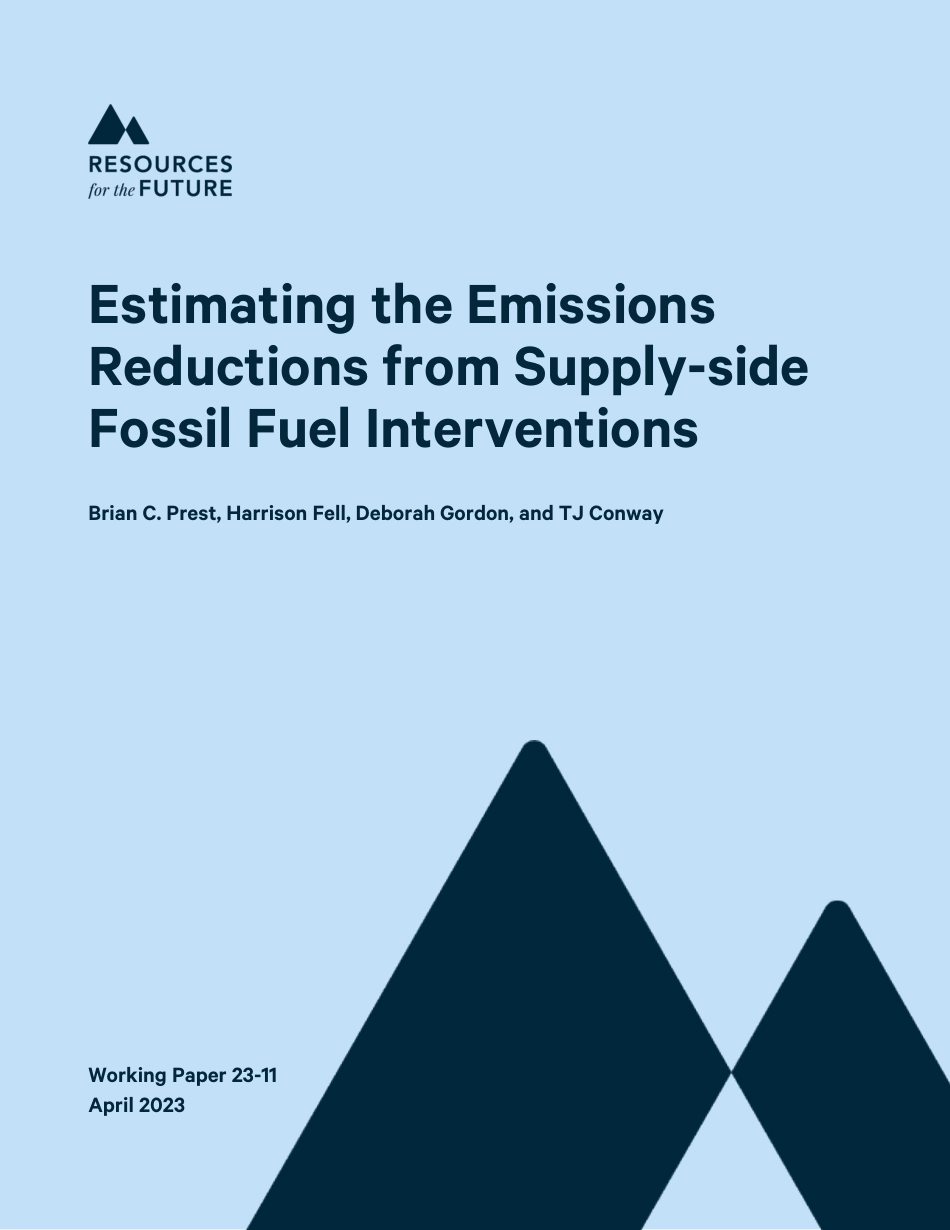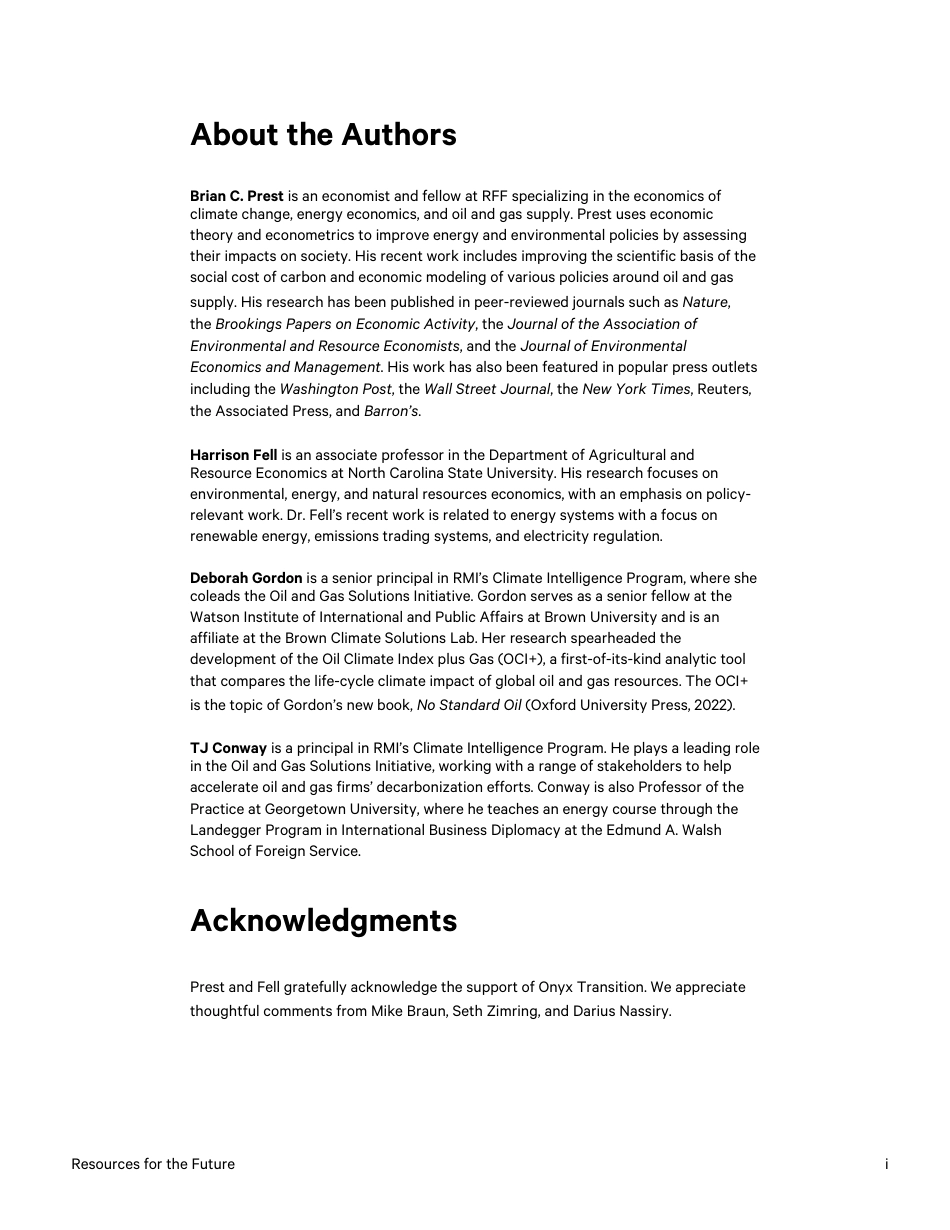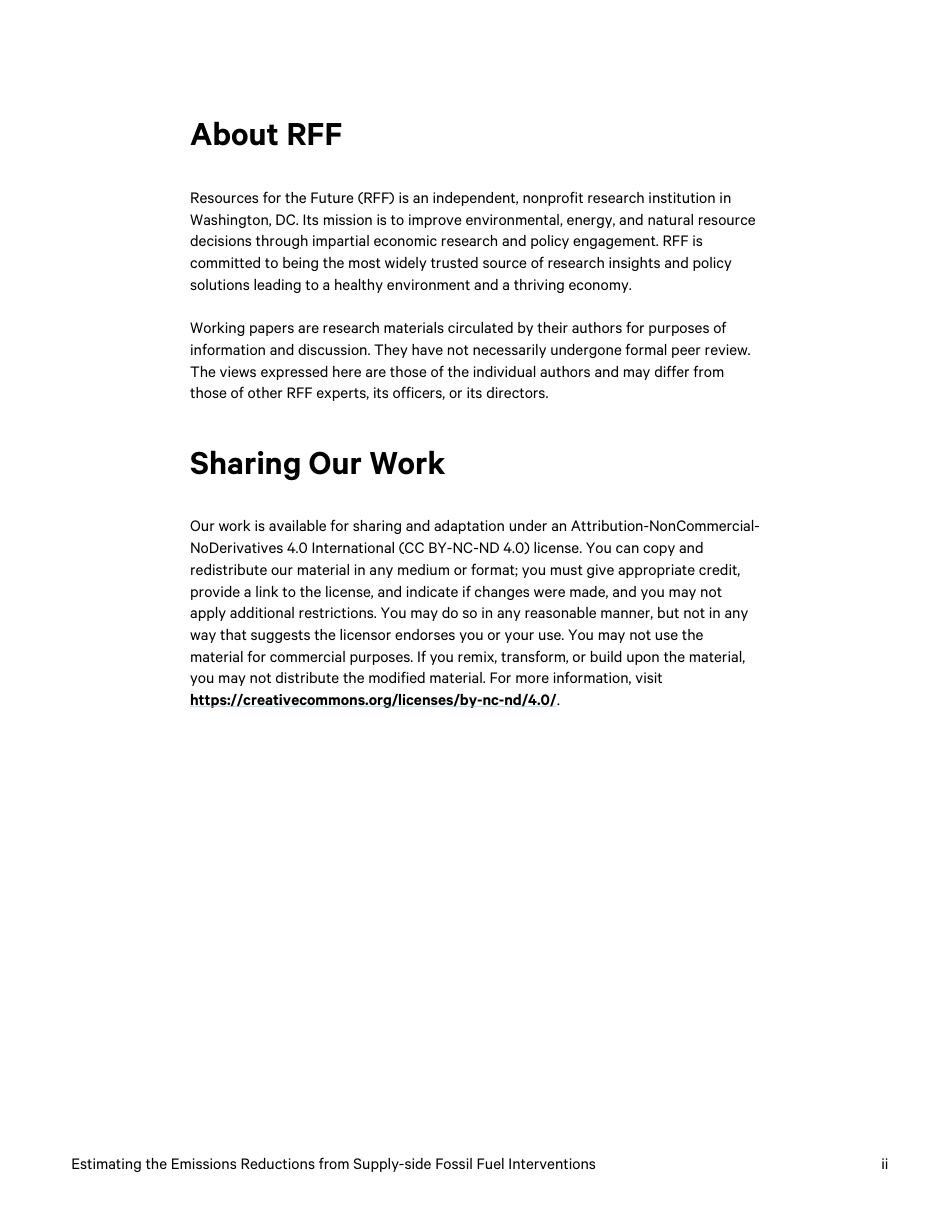Estimating the Emissions Reductions from Supply-side Fossil Fuel Interventions Brian C. Prest, Harrison Fell, Deborah Gordon, and TJ Conway Working Paper 23-11 April 2023 Resources for the Future i About the Authors Brian C. Prest is an economist and fellow at RFF specializing in the economics of climate change, energy economics, and oil and gas supply. Prest uses economic theory and econometrics to improve energy and environmental policies by assessing their impacts on society. His recent work includes improving the scientific basis of the social cost of carbon and economic modeling of various policies around oil and gas supply. His research has been published in peer-reviewed journals such as Nature, the Brookings Papers on Economic Activity, the Journal of the Association of Environmental and Resource Economists, and the Journal of Environmental Economics and Management. His work has also been featured in popular press outlets including the Washington Post, the Wall Street Journal, the New York Times, Reuters, the Associated Press, and Barron’s. Harrison Fell is an associate professor in the Department of Agricultural and Resource Economics at North Carolina State University. His research focuses on environmental, energy, and natural resources economics, with an emphasis on policy-relevant work. Dr. Fell’s recent work is related to energy systems with a focus on renewable energy, emissions trading systems, and electricity regulation. Deborah Gordon is a senior principal in RMI’s Climate Intelligence Program, where she coleads the Oil and Gas Solutions Initiative. Gordon serves as a senior fellow at the Watson Institute of International and Public Affairs at Brown University and is an affiliate at the...



